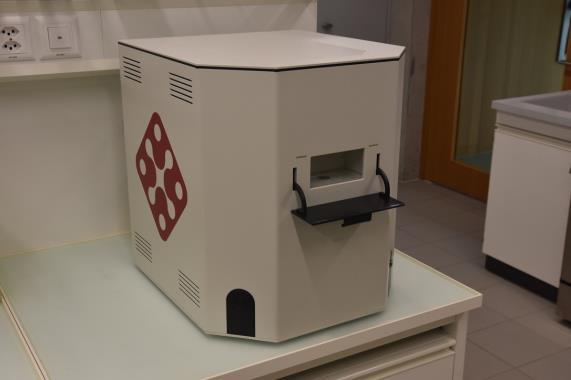Research Report 2021
Institute of Computational Physics
All-Organic Gap-Free Terahertz Photonics The goal of this project is to develop an all-organic and gap-free broadband terahertz (THz) generation and detection approach that will be highly valuable for a variety of applications ranging from fundamental studies of THz-light-matter interactions to industrially-relevant THz spectroscopy and imaging. Contributors: Partner(s): Funding: Duration:
U. Puc, M. Jazbinsek Ajou University, South Korea SNSF Bilateral Programmes 2020–2023
Terahertz sources based on organic electro-optic crystals have become increasingly important during the last years for THz photonics. This is because of their unique possibilities to combine extremely high THz electric fields needed for studying light-matter interactions, as well as their ultra-broad coverage of the complete THz range from 0.1 THz to beyond 20 THz, needed to match specific fundamental modes of the matter to be investigated and controlled. This makes organic electro-optic crystals on the one hand essential for the emerging field of nonlinear THz photonics. On the other hand, organic crystals offer a unique opportunity for extending THz spectroscopy and THz imaging applications beyond the few-THz limit of most of the presently employed broadband THz sources. [1] However, these materials themselves possess intrinsic molecular phonon and vibrational modes in the THz range, which leads to unwanted modulation including complete gaps in the generated THz spectrum. This modulation presents a fundamental limit for linear and nonlinear THz photonics based on organic electro-optic crystals, which we want to overcome in this project for gap-free THz photonics applications. In this interdisciplinary international project collaboration, the Korean side (Ajou University) is designing and synthesizing novel organic molecular crystals with large macroscopic optical nonlinearity and controlled crystal characteristics by various crystal-engi-
neering approaches. The Swiss side (ZHAW) is evaluating theoretically and experimentally the optical and the THz properties of the developed organic molecular crystals and implementing them for broadband THz applications.
Fig 1.: In this project, organic electro-optic crystals and their combinations are used for ultra-broadband THz-wave generation. Illustration: DOI: 10.1002/adfm.201707195
Finally, profiting from the advantages offered by the newly developed all-organic gap-free THz photonics approach, we will investigate various novel organic transporting materials interesting for a variety of applications such as organic solar cells, organic field effect transistors, as well as organic photodetectors and gas-sensing applications. Literature: [1] Jazbinsek, M.; Puc, U.; Abina, A.; Zidansek, A., 2019. Organic crystals for THz photonics. Applied Sciences. 9(5/882).
Fig 2.: THz time-domain signal (a) and the corresponding power spectrum (b) of the THz setup based on organic crystals: The aim of this project is to reduce the modulation of the signal seen in (b) to achieve a flat spectral response over the whole frequency range.
Zurich University of Applied Sciences
34
www.zhaw.ch
















